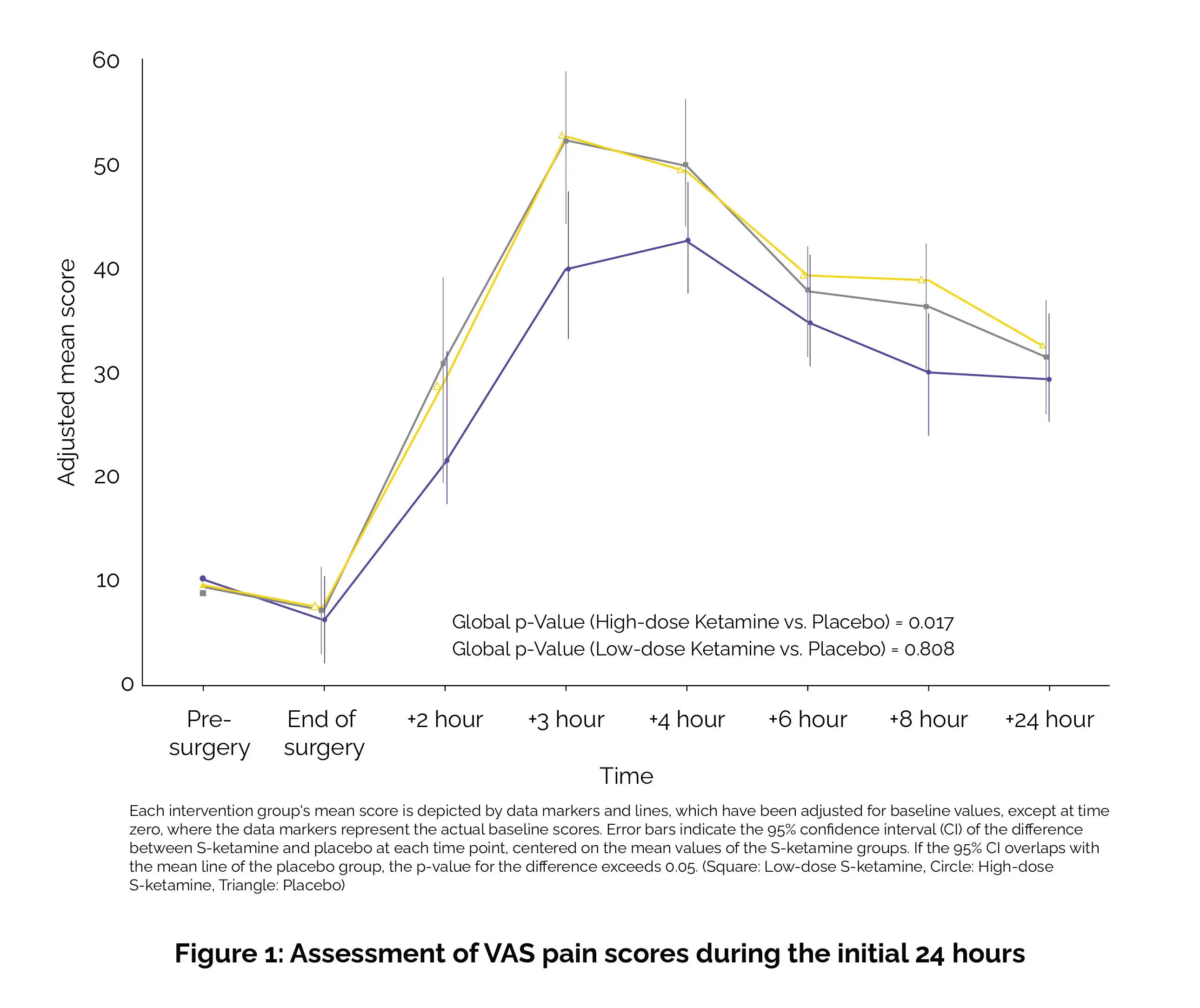Categories
Change Password!
Reset Password!


This randomized, placebo-controlled, double-blind clinical trial sought to examine the analgesic efficacy of intravenous S-ketamine (anesthetic agent) in third molar surgery.
Pre-emptive high-dose intravenous S-ketamine (0.25 mg/kg) significantly reduces pain during the first 24 hours after the third molar surgery.
This randomized, placebo-controlled, double-blind clinical trial sought to examine the analgesic efficacy of intravenous S-ketamine (anesthetic agent) in third molar surgery.
Participants meeting the criteria of being healthy, falling under American Society of Anesthesiologists classification I or II (ASA), aged between 18 and 44, and weighing between 50 and 100 kg were enrolled. They were then randomly assigned to one of three groups, each comparing different doses of S-ketamine (high: 0.25 mg/kg or low: 0.125 mg/kg) against a placebo (saline).
The key endpoint measured was the change (Δ) in visual analogue scale (VAS) pain scores, calculated by subtracting the preoperative VAS pain score from the VAS pain score at 4 hours postoperatively (VAS Δ = VAS pain 4 h - VAS pain preoperatively [mm]). Secondary outcome variables encompassed the time taken to administer the first rescue medication (in minutes), the quantity of rescue pills used within the initial 24 hours, the utilization of supplementary analgesics, and safety assessments.
No significant disparity was witnessed in VAS scores at the 4-hour mark postoperatively between the placebo group and either the high or low-dose S-ketamine groups. However, over the initial 24 hours, there was a notable discrepancy among the groups, with the high-dose S-ketamine group reporting lower VAS scores, as shown in Figure 1:

Furthermore, those in the high-dose S-ketamine group waited approximately 12 minutes longer, on average, before resorting to rescue medication. Hallucinations and nightmares were infrequent and evenly distributed across all groups. Nausea occurred more frequently in the high-dose S-ketamine group, although still in small proportions (12 out of 60 subjects).
The preemptive administration of S-ketamine at a dose of 0.25 mg/kg led to a noteworthy reduction in overall pain, as assessed by VAS, during the initial 24 hours following surgery. Additionally, patients in the high-dose ketamine group experienced a prolonged interval between the end of surgery and the initial need for rescue medication compared to both the low-dose ketamine and placebo groups.
British Journal of Pain
Intravenous S-ketamine’s analgesic efficacy in third molar surgery. A randomized placebo-controlled double-blind clinical trial
Lars B Eriksson et al.
Comments (0)